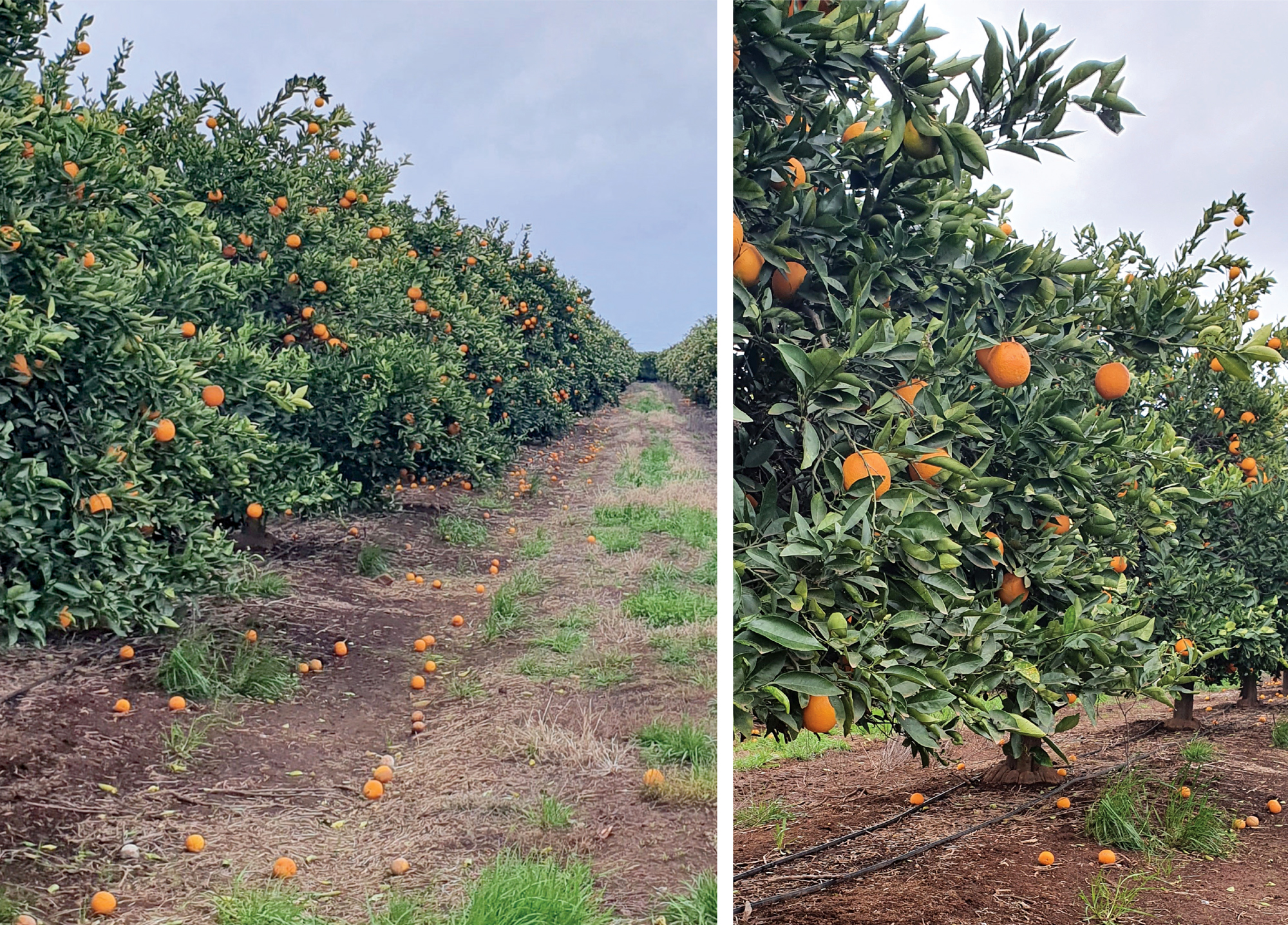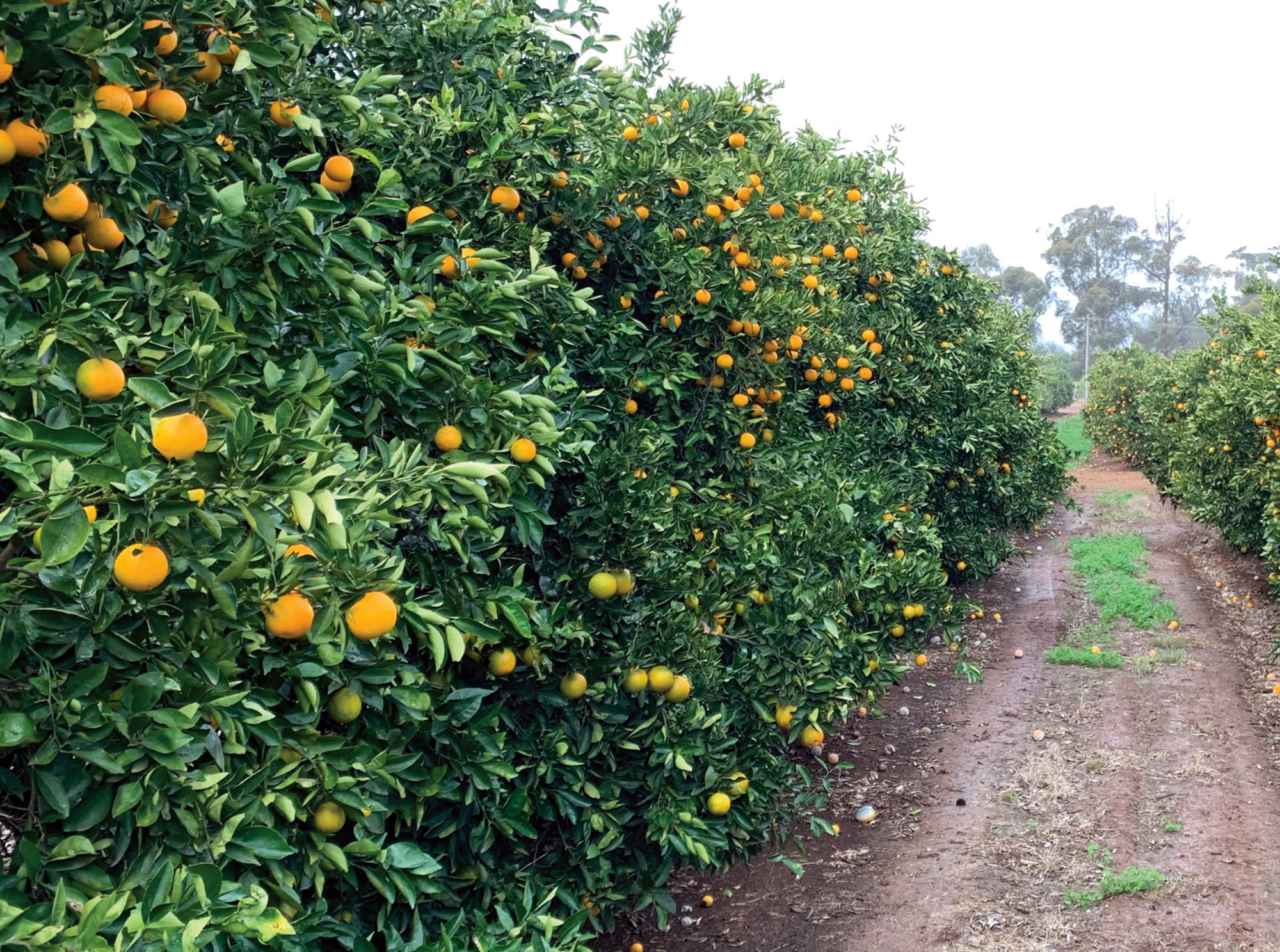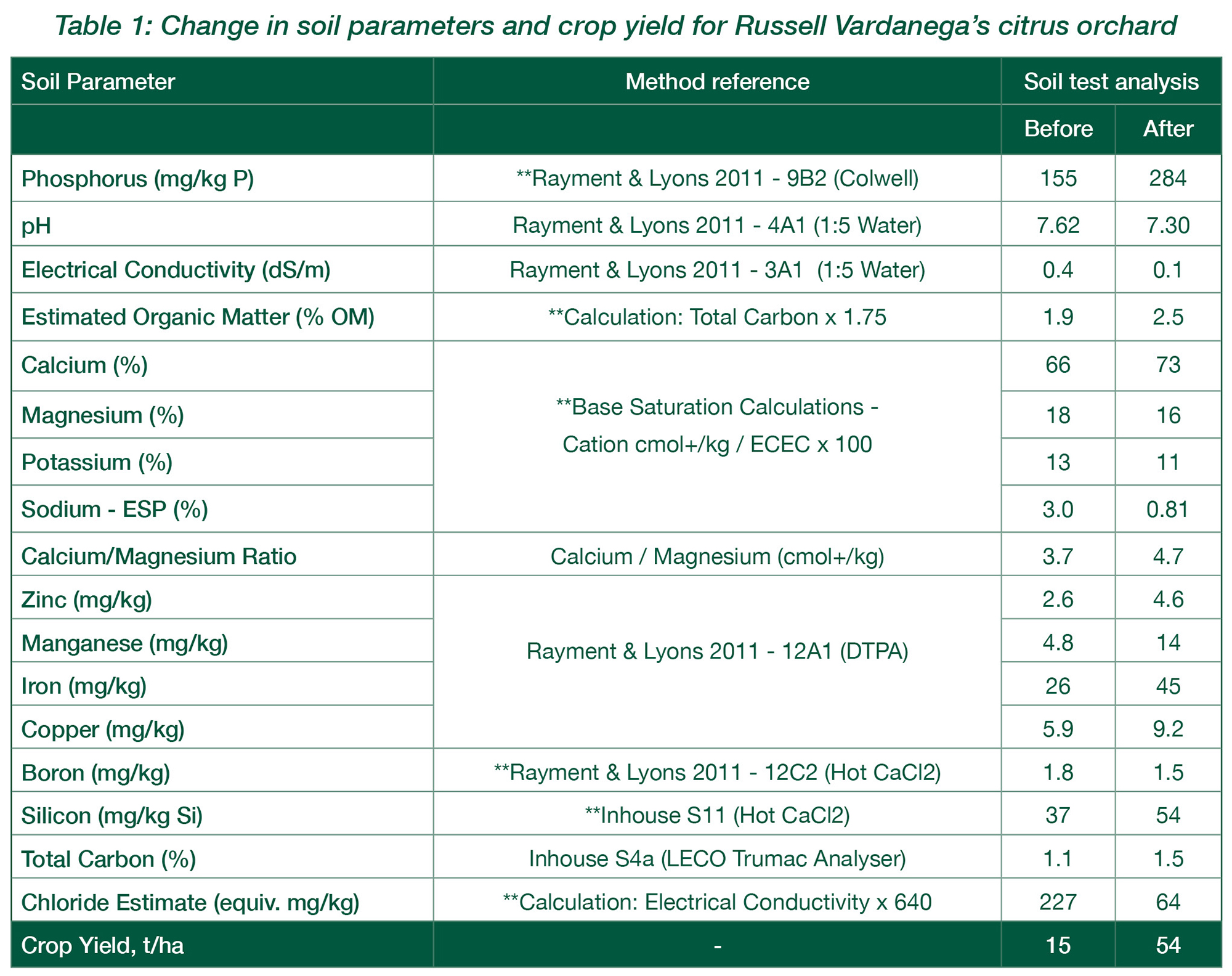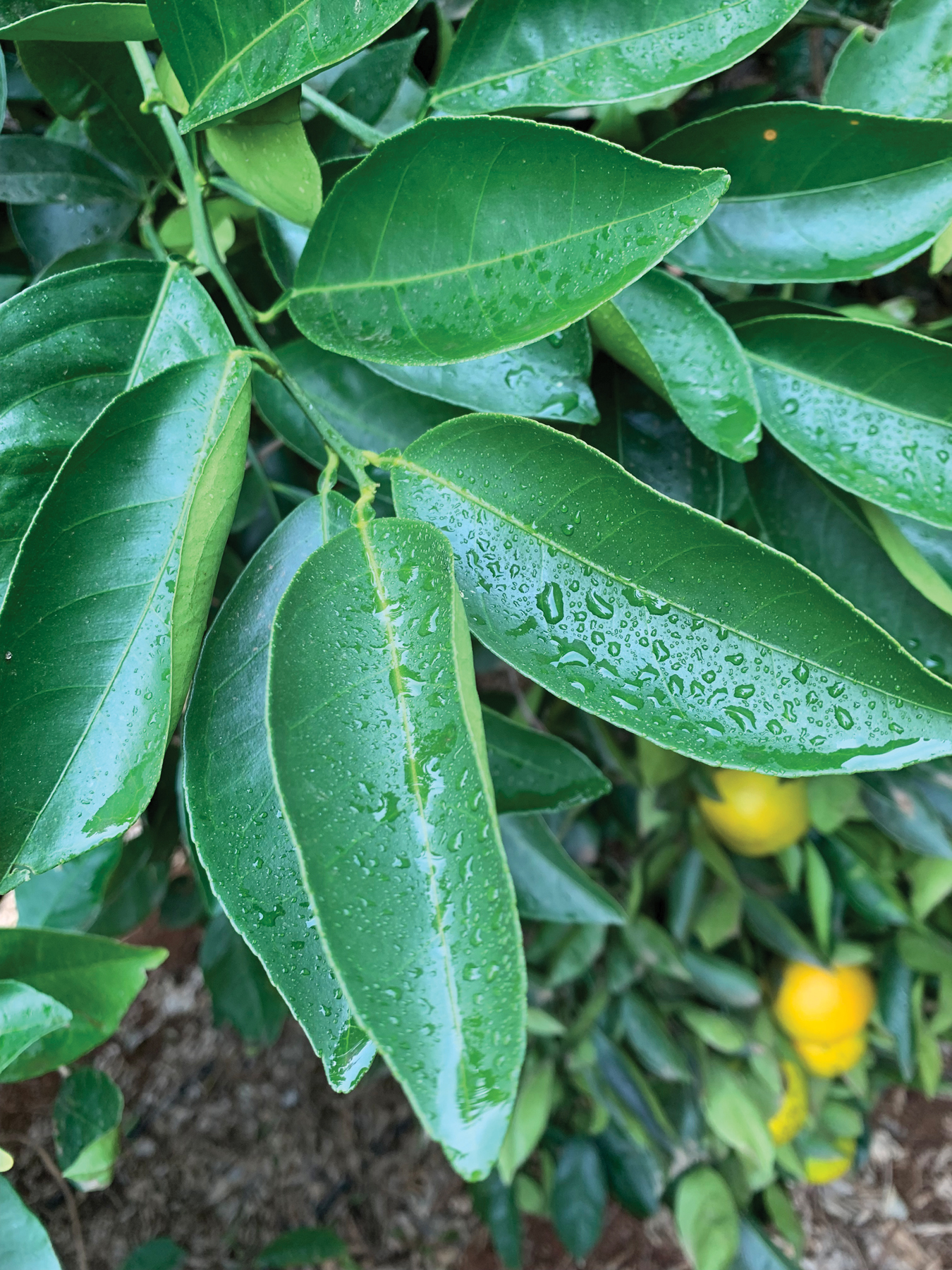
Case
Study
Location
Riverina, New South Wales
Crop
Citrus
Improving citrus crop yield and orchard health
Woodside Marketing is a family-owned national enterprise based in Griffith NSW. Its experience in farming fruit and vegetables spans three generations of the Vardanega family commencing with the arrival to Australia in 1912 of Girolamo Vardanega from Treviso Italy. Grandson of Girolamo, Russell Vardanega today is the CEO of the integrated business which includes wholesale fruit and vegetable growing, packing, processing, marketing, distribution, and contract labour hire.
Russell was familiar with BioAg’s nutrition program from his days of developing a hazelnut orchard in 2014. In 2017 he acquired an established but totally rundown citrus orchard in Griffith.
Yields were reduced due to inhibited crop growth, insignificant canopy coverage, small leaves with evident nutrient deficiencies, as well as low rate of new growth and numbers of generative organs. The combined impact of all those factors was a dramatic yield reduction achieving only 15 t/ha; compared to a potential average yield for planted varieties (Navel and Valencia) of 55 plus t/ha.

Prior to the BioAg program, the orchard shows signs of poor nutrition – low density canopy, severe zinc deficiency and a high rate of fruit drop.

In comparison, the canopy density dramatically increased during the BioAg program, with less fruit drop and better yield.
For a number of seasons, despite the high level of available potassium (K) and phosphorus (P) in the soil, Russell followed the standard recommended nutrition program of adding more synthetic fertiliser, as well as trying different soil improvement techniques including application of soil ameliorants (e.g. gypsum), but with no positive impact on the crop health or yield.
Perplexed as to why his traditional horticulture practices were no longer effective and in fact were stressing the orchard, Russell reached out to BioAg’s Horticulturalist and Viticulturalist Stephan Logoida for advice in 2019. Stephan performed soil and tissue tests and documented treatment history to build a complete picture of the current orchard’s status.
The information clearly showed that the orchard was being over-fertilised, even though historical applications were based on agronomic advice.
“The soil test highlighted that the overuse of synthetic fertiliser had broken down all-important soil structures, increased nutrient loss pathways, and reduced the soil’s ability to supply nutrients when the crop required it.”
The soil test highlighted that the overuse of synthetic fertiliser had broken down all-important soil structures, increased nutrient loss pathways, and reduced the soil’s ability to supply nutrients when the crop required it.
BioAg suggested a nutrition program aimed at:
– improving soil health and stimulating root and new vegetation growth
– mitigating nutrient deficiencies (mainly Zn, Mn)
– addressing soil properties including salinity high sodium high pH and low soil carbon
The tailored nutrition program anticipated application of nutrients (predominantly microelements) that were low in the soil and excluded those that were already present in excess thereby improving nutrient use efficiency.
Stephan recommended BioAg’s biostimulants for both soil treatments – Soil & Seed and HydraHume; and foliar treatments – HydraSea50, Balance & Grow and Fruit & Balance. Stephan also recommended to Russell to reduce the synthetic fertiliser applications as they were not required and in fact were doing the soil and the trees damage. Potassium and phosphorus fertiliser’s were also not required as the soil test analysis confirmed the abundance of those elements. Calcium nitrate was used as a nitrogen and calcium source at a rate 90 units/ha.
The expectation was that it would take two to three seasons to fully rebuild the soils.
Russell initially followed the program but became concerned that “everyone else” around was still applying large amounts of traditional synthetic fertiliser, and so applied additional nitrogen. Unfortunately, this reversed the early gains in season one, resulting in a low harvest yield typical of prior seasons.

In comparison, the canopy density has dramatically increased during the BioAg program, with less fruit drop and better yield.
Having seen the positive changes to the health of his trees early on, Russell fully committed to the BioAg program in the second season and noticed a significant improvement in crop growth. Tree canopies were thicker with bigger leaves supplying a larger photosynthetic area, and dark green without any of the previous visual deficiency symptoms.
After only two seasons of the BioAg program, both the soil conditions and soil properties were improved, nutrient deficiencies addressed, synthetic fertiliser applications reduced, and production yields dramatically increased. He is now convinced that a biological approach to soil maintenance is a more effective, cost-efficient, and a safer sustainable method of horticultural production, compared to his traditional synthetic fertiliser practices.
Russell commented, “I can’t believe the turnaround in the overall health of the orchard and citrus trees after fully implementing BioAg’s tailored program. Best of all, we achieved a bumper crop with a threefold increase in yield using 10% less nitrogen fertiliser, which has been a huge cost-saving this season given fertiliser prices going through the roof.”

Key soil property improvements across the two-year period included:
– soil pH reduction from 7.6 to 7.3, which can be explained with the Na and K drop
– overall electrical conductivity improvement, along with chlorides that determine the soil salinity
– positive organic matter and soil carbon increase
– increased availability of trace elements (Zn, Mn, Fe), due in the main to pH improvements
– higher solubilisation of P
– Ca:Mg ratio improvements providing better soil structure and water conductivity
– significant yield response
“Healthy balanced nutrient-rich soils produce strong healthy high-yielding trees and the BioAg program certainly turned the orchard performance around. The actual cost was also cheaper than using traditional chemical fertilisers with the ongoing benefits and soil health effectively free after the initial year of application.”

The zinc deficiency responded well to the BioAg program, resulting in good new growth and healthier trees.
“Healthy balanced nutrient-rich soils produce strong healthy high-yielding trees and the BioAg program certainly turned the orchard performance around. The actual cost was also cheaper than using traditional chemical fertilisers with the ongoing benefits and soil health effectively free after the initial year of application,” said Russell.
BioAg’s approach starts with understanding the health of your soil to identify what’s needed, what’s not needed and what’s doing your soil and plants harm. Our focus is to measure and analyse the soil, develop bespoke cost-effective nutrition programs that meet the soil and crop requirements to help growers achieve yield and produce quality goals.
Our range of biostimulants are at the heart of our programs, with proven results both on-farm and in independent, replicated trials which can be viewed here on the BioAg website.
Download case study
Download a PDF version of the above case study.

Recent Comments